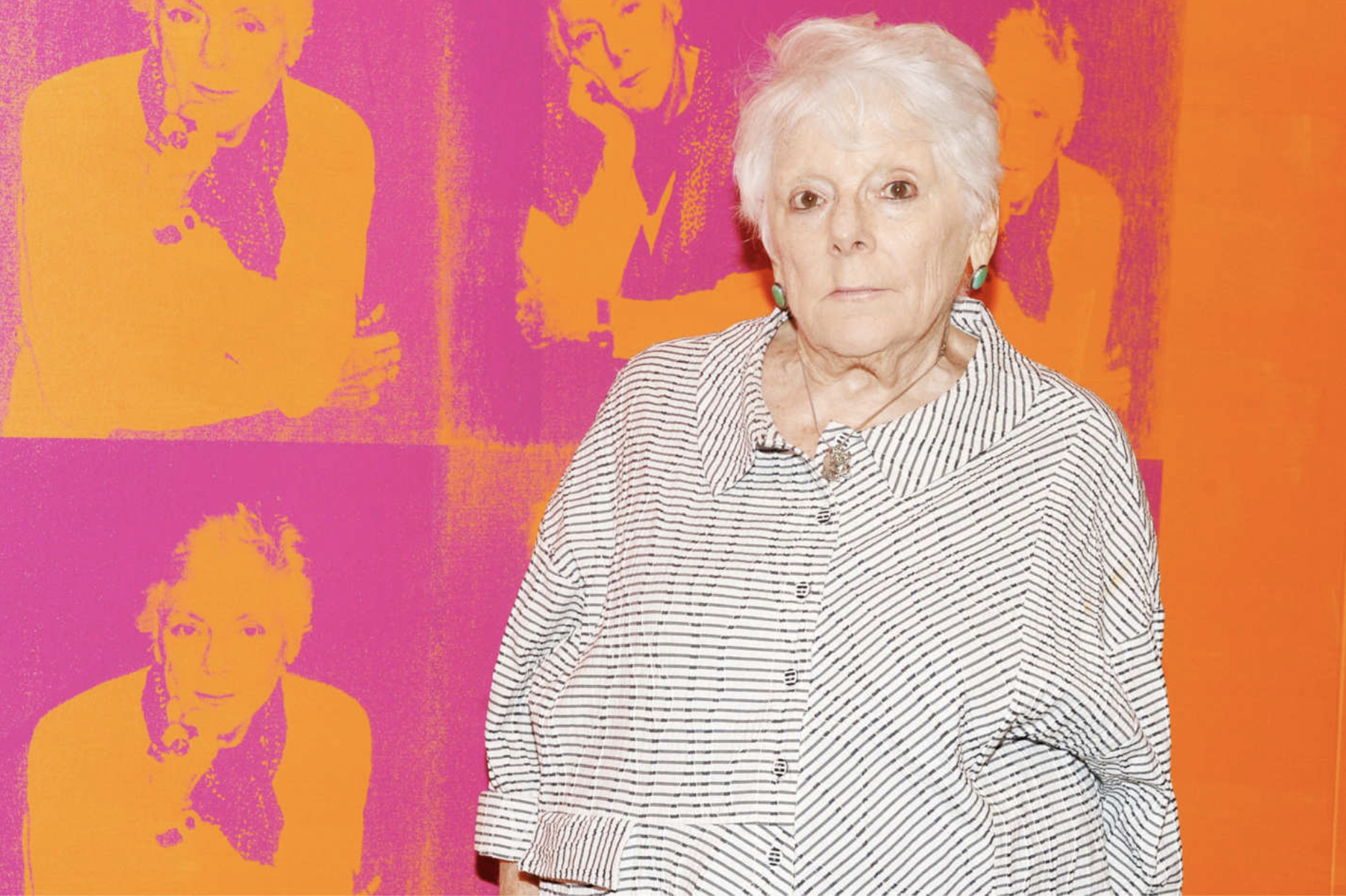Reflecting on Linda Nochlin’s Legacy
The celebrated art historian Linda Nochlin has died in her Manhattan home at the age of eighty-six.
By Francesca White
Linda Nochlin, standing in front of Deborah Kass’s 1997 work Orange Disaster (Linda Nochlin).
Linda Nochlin, the prominent art historian, passed away on the 29th October 2017. However, her legacy, as a figure, who has permanently shaped the study of the history of art, lives on. Linda Nochlin will be most widely remembered for her 1971 article, “Why Have There Been No Great Women Artists?”, which has become a cornerstone of feminist art history. In light of the sad news of her death, it seems fitting to revisit this seminal work and contemplate Nochlin’s response to this most important of questions. It is one that has no doubt crossed the minds of numerous art history students, whose degree (undertaken by so many women) is so largely comprised of studying the great achievements of men. Regrettably, this disparity of emphasis is justifiable. ‘No matter how hard we manipulate the historical or critical evidence’, Nochlin argued, there have been ‘no supremely great women artists as far as we know’. I might add at this point, that despite their lack of inclusion in the artistic canon, this does not mean that there are no interesting and important women artists worthy of study.
Nochlin argued convincingly in her nuanced 1971 analysis that institutional structures in our society favour those who are white, middle class and most importantly male, and imply that male subjugation of women is the ‘natural’ order of things. She went on to dismiss the prevalent ‘myth’ of an artist as being born ‘great’, and thus male dominance in art being pre-ordained and inevitable. Instead, Nochlin moved her argument away from the idea that there must be something ‘wrong’ with women, to highlight how, in fact, the problem lies with the institutional structures of our society. A society structured, she argued, to distinctly favour men over women. She explored the fact that women could not take part in life drawing classes until the 1890s, arguing that as a consequence they could not compete in the most respected genre of painting, History painting, and thus were restricted to "lesser" genres. Furthermore, Nochlin noted that women have been preordained by societal expectations to put their marriage and family as their ultimate priority. If they do not do this, she argued, they are deemed outsiders. This expectation and discrimination does not apply to men, who are able to put their artistic careers first without stigmatisation. So difficult is female success in our society, Nochlin contended, that those women who do achieve, against all odds, are, almost without exception, supported by strong artistic fathers or male companions.
This influential article was by no means Nochlin’s only achievement, however, but one of a myriad of contributions to the subject. Beyond this article, many students will have encountered her other books when perusing the University library shelves, such as Realism (1971), The Politics of Vision (1991), The Body in Pieces: The Fragment as a Metaphor of Modernity (2001), and Bathers, Bodies, Beauty (2006). Nochlin can also be credited with curating a number of influential exhibitions, such as “Women Artists: 1550 to 1950” at the Los Angeles County Museum of Art (1976), “Global Feminisms: New Directions in Contemporary Art,” at the Brooklyn Museum’s Elizabeth A. Sackler Center for Feminist Art (2007), as well as a Courbet retrospective at the Brooklyn Museum in 1988. She taught regularly throughout her career, retiring as a professor of modern art at NYU’s Institute of Fine Arts in 2013.
Linda Nochlin described her work as dialectic, and it is with this thought that I draw to a conclusion. Nochlin saw ‘feminist art history—like feminism itself—[as] a product of give and take, talking and listening’. She tackled a long-standing question and, in doing so, exposed why being a ‘great’ artist has always been so much easier when one is born male. In light of her death, it is crucial that we continue talking, listening and questioning the debates surrounding feminist art history, and ensure we remember the valuable contributions of this most accomplished of art historians.
Bibliography
Nochlin, Linda. Women, art, and power; and other essays. London : Thames & Hudson, 1989.
Russeth, Andrew. “ Linda Nochlin, Trailblazing Feminist Art Historian, Dies at 86”. ArtNews, 29th October 2017. Accessed on 8th Nov. http://www.artnews.com/2017/10/29/linda-nochlin-trailblazing-feminist-art-historian-dies-at-86/
Saltz, Jerry. ‘Why Have There Been No Great Women Artists?’ Linda Nochlin Didn’t Just Ask the Un-Askable, She Forced the Art World to Give a Better Answer. Vulture, 30th October 2017. Accessed on 8th Nov. http://www.vulture.com/2017/10/art-history-can-be-divided-before-linda-nochlin-and-after.html

